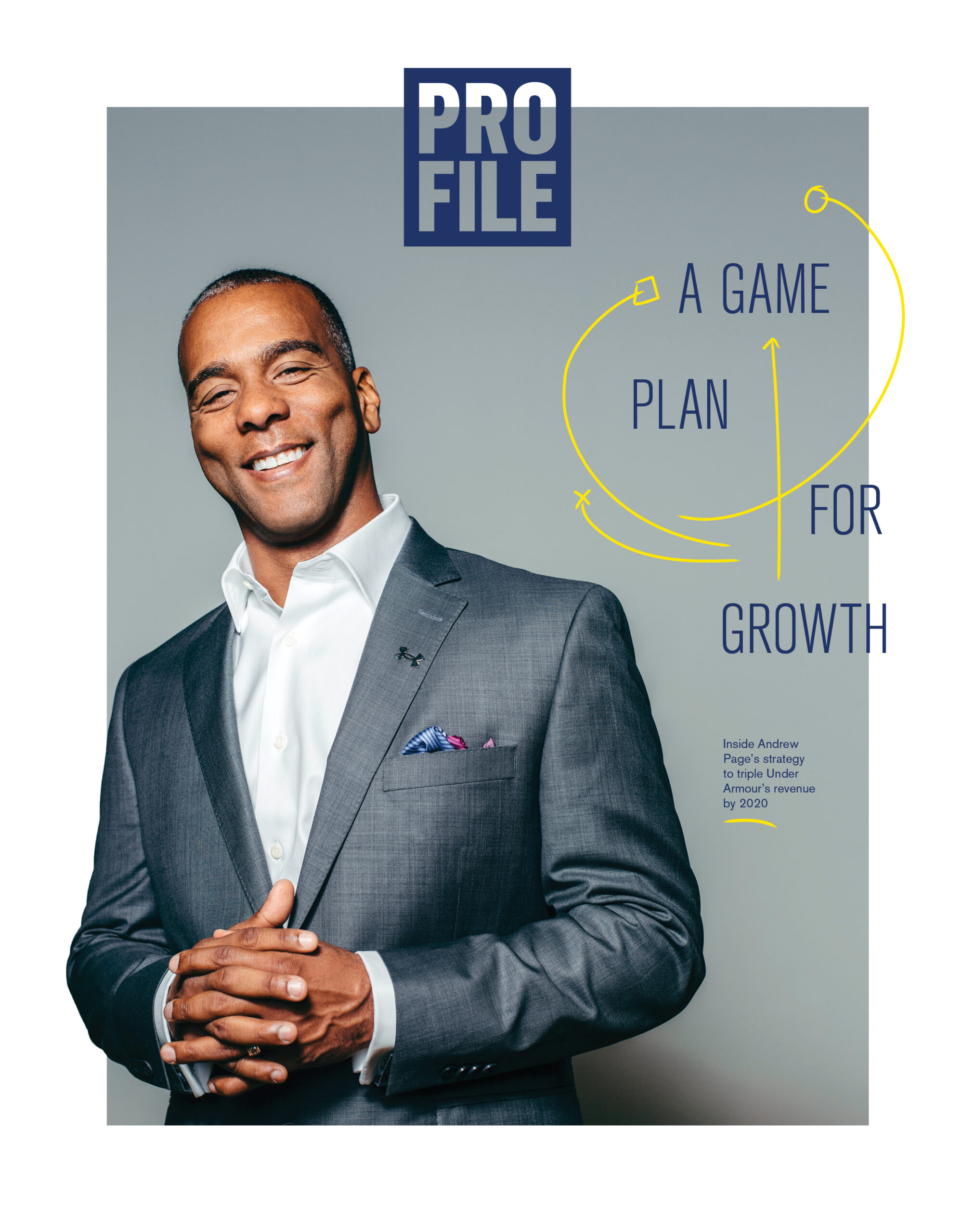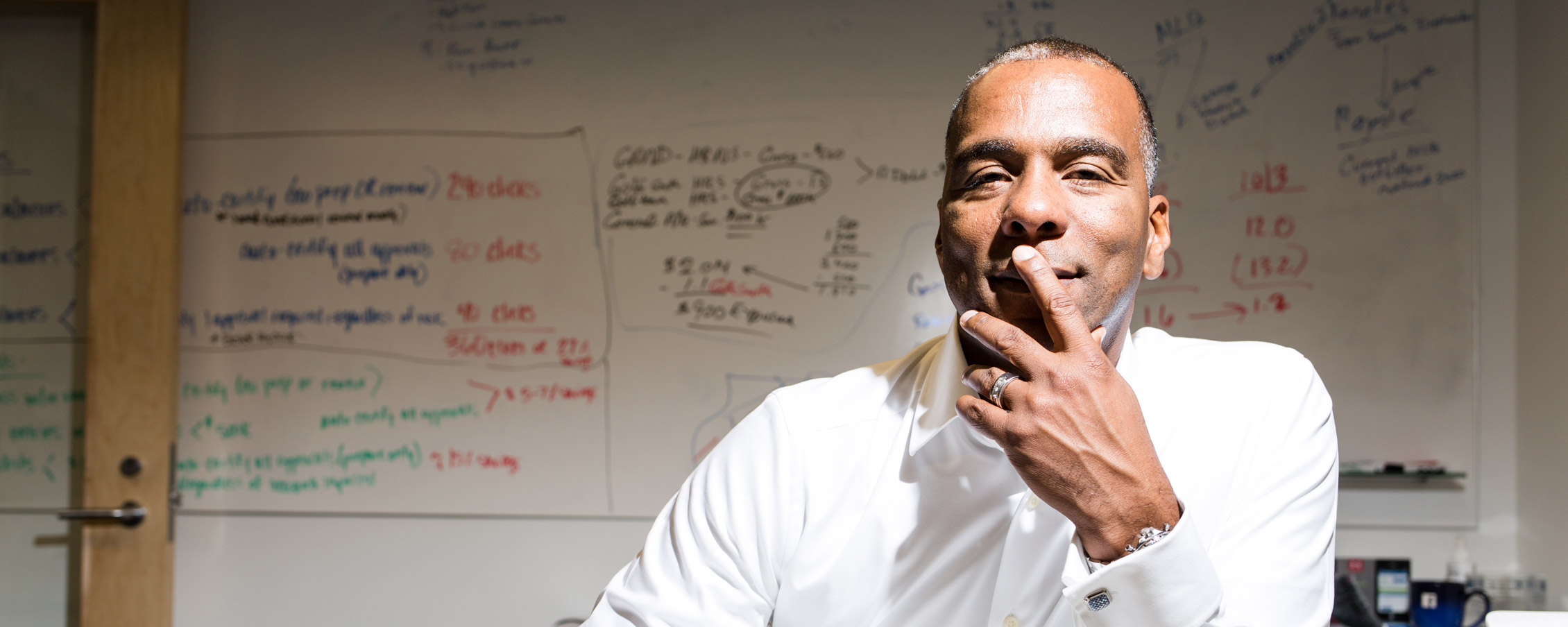Like the athletes it outfits with footwear, apparel, and gear, Under Armour pursues success by setting goals. In 2014, CEO Kevin Plank predicted that the company would grow from $3 billion in annual sales to $10 billion by 2020. Corporate controller Andrew Page is an important player in the company’s strategy to get to this goal. One of his key expectations is that the accounting team at Under Armour reflect and respond to the company’s culture.
Under Armour’s culture is a team-oriented, two-way commitment between employees—appropriately referred to internally as “teammates”—and the company. It works. According to Page, Under Armour has doubled in size every three to four years, and it actively seeks talent that can keep pace with that level of growth.
“From an accounting teammate perspective, I look for professionals who are not only talented in the accounting discipline, but equally astute in creating capacity for themselves—individuals who thrive on creating a better way, figuring out how to be more efficient,” Page says. “The ability to scale with the growth of the company is key.”

Page adds that relationships with accounts, vendors, and athletes continue to become more complex alongside Under Armour’s international growth—and that his team prides itself on being responsive to these varying needs of the business. “In essence, every department from sales to human resources to supply chain to accounting has its role within Under Armour, while at the same time all striving toward the same goal,” Page says. “Much like a professional sports team.”
Page describes the company culture as such that employees must be willing to adapt and go beyond their day jobs. As the corporate controller, his responsibilities have included not only overseeing the accounting functions of the company, but also providing key support to other functional teams such as legal, retail, strategy, corporate real estate, and IT.
At Under Armour, Page says, employees are encouraged and expected to have points of view. Accounting is no exception when it comes to strategic decisions. The Under Armour executive team wants to know the downstream and future implications of key decisions from an accounting perspective.
“Our leadership team trusts us to provide the guardrails to keep the company in bounds when it comes to investigating certain decisions that have financial implications,” he says. “It’s a balancing act. We want our teammates at the top of their game, with a keen understanding of the professional standards in accounting, while at the same time having the ability to understand the business objectives and alternatives, discuss the topics with the business leaders, and provide valuable input to the development of a solution that complies with the professional standards.”
So, how does an accounting and finance employee balance those strengths while maintaining a rational, data-driven approach to decision-making? “I don’t think it’s hard to master because it’s something you come to the table with,” Page says. “It’s something we look for in the hiring process. You set the guardrails, but once inside those guardrails there’s an open-minded thought process around what’s possible.”
Read more of Profile’s Top 50 articles.
Then there’s the passion for the brand. Page says that most companies he’s worked for have tended to keep accounting at a distance from the product. This is not the case at Under Armour. “The controllership team knows the product,” he says. “We are raging fans of the brand.”
A new global ERP system is set to go live in phases next year and should help Page and his team. Under Armour is rolling out the SAP Fashion Merchandising Solution system—unique in that it will give the company end-to-end visibility across the value chain, increase visibility to inventory across its stores and channels, and increase reporting capabilities using multiple variants. Coupled with the insights driven from Under Armour’s Connected Fitness business, the new system will enable it to know its consumers better than anyone in the industry.
Over the past two years, Under Armour acquired the fitness tracking apps MapMyFitness, MyFitnessPal, and Endomondo. In 2015, it harnessed those acquisitions to create a digital fitness community via four mobile platforms. And at the Consumer Electronics Show last year, it unveiled two wireless headphone sets in partnership with JBL, a smart shoe, and an activity tracker. It also introduced HealthBox, a connected fitness system.
All of this ties in with the new ERP system. “We will be able to evaluate customers’ buying patterns, exercise patterns, sleeping patterns, and nutrition patterns, and, using these insights, deliver to them product and information that helps them live healthier lives,” he says. “We’ll provide information to our consumers that they weren’t even asking for. But once they get it, they won’t know how they lived without it.”
Meanwhile, on the back end, having all this information in one place will serve as the backbone of Under Armour’s growth strategy. The new system will give Page and his team increased data and transparency to help the company make optimal decisions moving forward. “We believe the new ERP system will also further increase automation across our accounting function, allowing our accounting teammates more time to analyze data and supporting our business, replacing time previously spent on booking journal entries or manually inputting information,” he says.
The company anticipates the new SAP system to be active for the entire company by the end of 2018, positioning Under Armour as the first company in its industry to operate on one global system.
Page and his team are the heart of Under Armour’s offense driving toward its $10 billion goal. Page is confident that they will reach it—so long as they follow the playbook as defined by the company’s culture.









